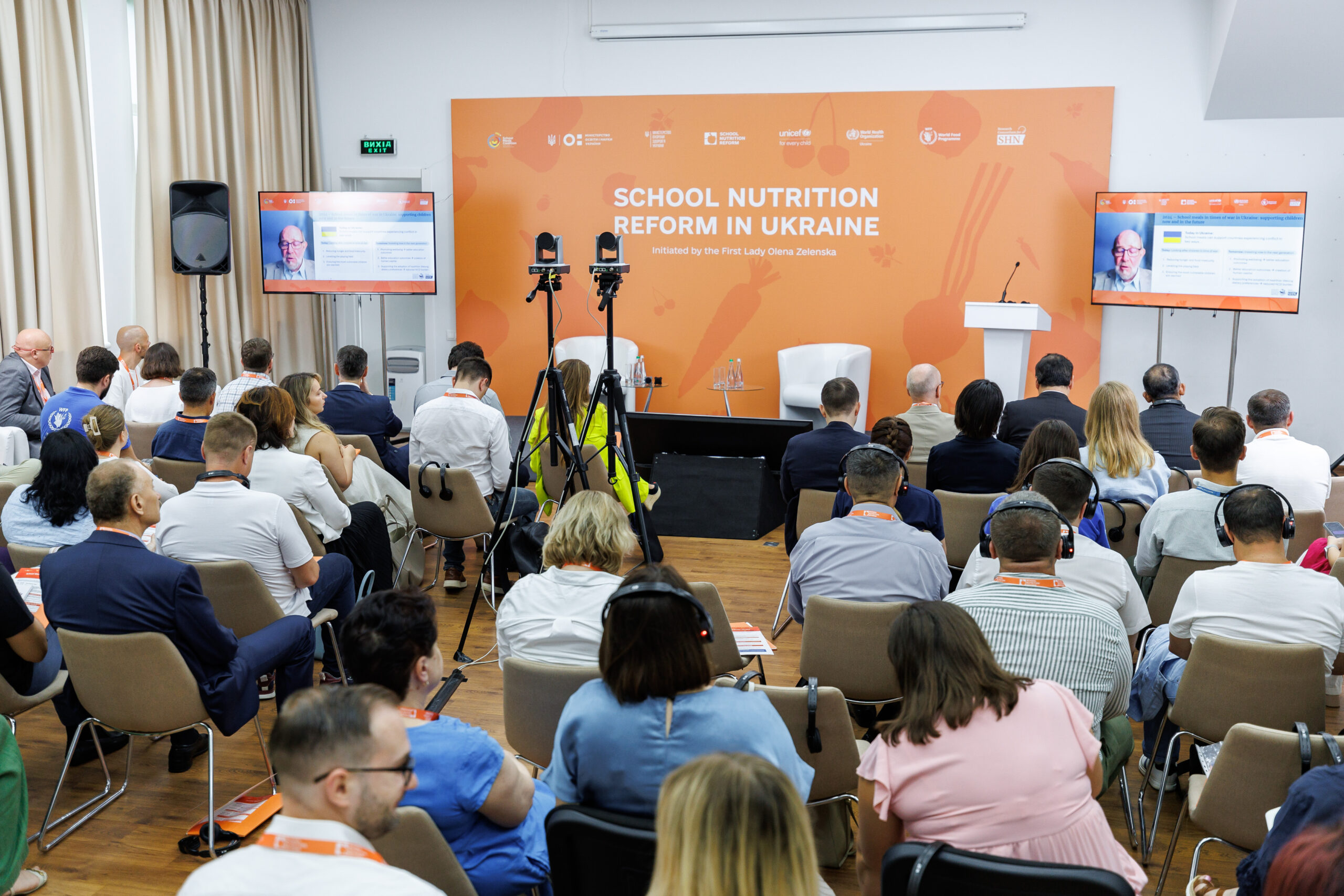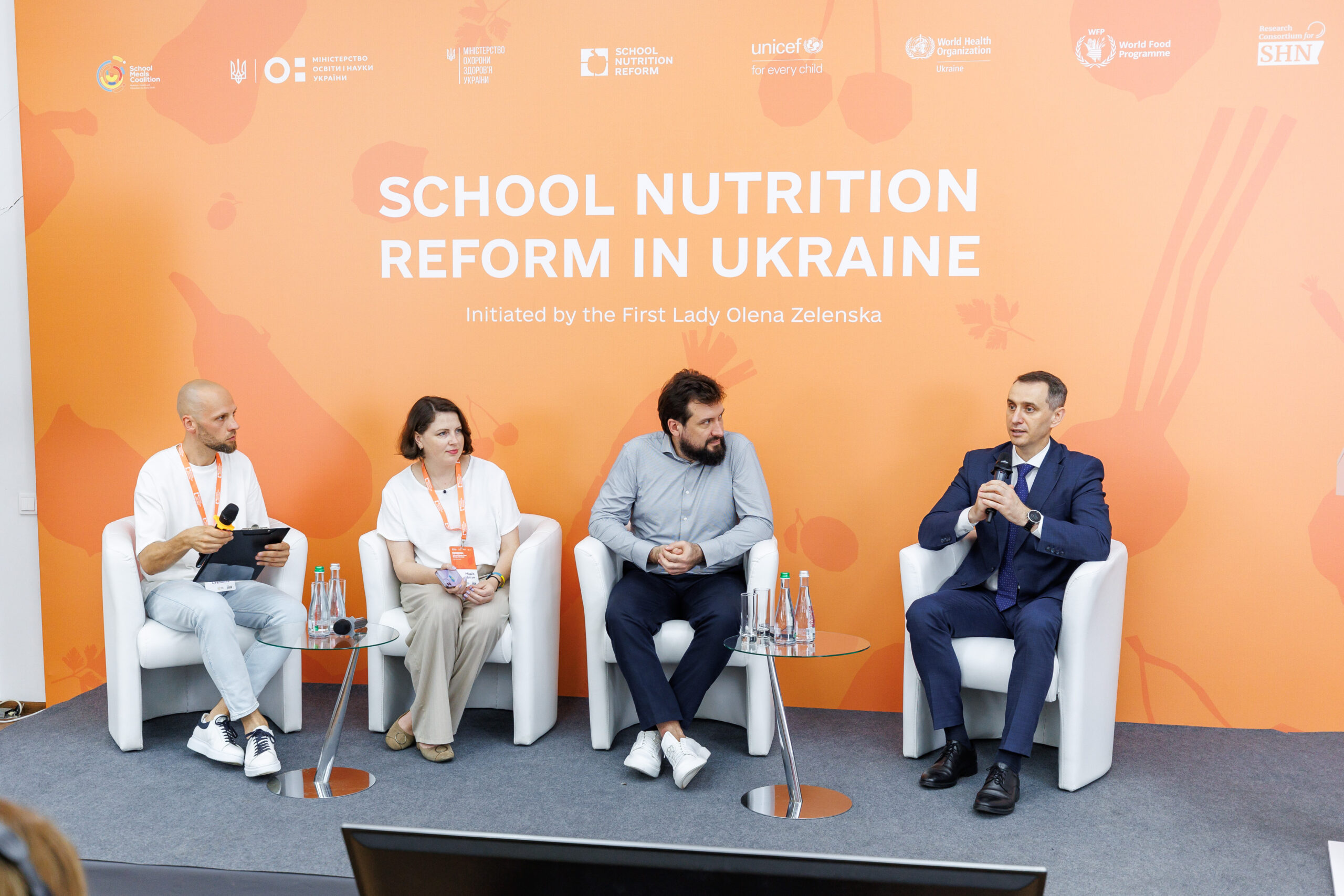On adolescent nutrition within the School Meals Case Study: Ukraine
On July 18, 2024, the presentation of School Meals Case Study: Ukraine was held – the first event of the School Meals Reform Team within the School Meals Coalition and the School Health and Nutrition Research Consortium.
The presentation was held with the support of the UNICEF Office in Ukraine, the WHO Office in Ukraine and the UN World Food Program and allowed us to share with partner countries and participants of the event the successful experience accumulated over 4 years of reform implementation.
The event brought together government representatives, partners and friends of the reform from many countries.
The NGO “Ukrainian Institute for Social Research after Olexander Yaremenko ” was invited as a speaker to present data on the nutrition of adolescents, collected as a result of the sixth wave of the national survey Health Behaviour in School-aged Children (HBSC) within the framework of the WHO international project, the complete presentation of which is yet to come.
The current data for 2023, presented at this event, highlighted existing problems in the nutrition of boys and girls aged 11-17.
- Namely:
The study found that boys consume meat, eggs, fish, nuts and seeds without added salt or sugar, as well as dairy products – whole milk, fermented milk cheese (cottage cheese), fermented milk products (kefir, etc.) somewhat more often than girls. Boys also consume bread, sausages, snacks, carbonated and energy drinks more often, which can potentially cause weight gain and metabolic disorders. Girls eat sweets (candy, chocolate, cakes) more often than boys. - Boys are especially prone to eating something when working or playing on a computer, tablet, or phone (44% eat something daily while spending time at a computer or device, compared to 34% of girls). There are slightly more girls who eat while watching TV and videos. Interestingly, the proportion of teenagers who snack while working or playing on a computer, tablet, or phone decreases slightly with age.
The voiced data reveal one of the many issues of this extensive study, namely the problems in the nutrition of modern teenagers. And we are confident that studies such as HBSC help track trends in nutrition and shape the right steps for change.
Discussion of the importance of providing children with hot lunches for the formation of healthy eating habits, the impact of nutrition on the health and quality of life of students was one of the topics touched upon in the reports of the Minister of Health of Ukraine Viktor Lyashko, Deputy Minister of Education and Science of Ukraine Andriy Stashkiv and Deputy Minister of Economy of Ukraine Nadiya Bihun.
The event also mentioned the challenges of war, which Ukrainian regions and communities constantly face.
Head of the School Nutrition Reform Team Orest Stepaniak shared successful cases of updating the regulatory framework, modernizing infrastructure, setting up a pilot factory-kitchen and improving the qualifications of managers and cooks.
The Reform Team managers spoke about urgent needs, including the need to support Ukrainian communities to ensure equal access to hot lunches for students in grades 1-4 and children from privileged categories, as well as to modernize infrastructure and create opportunities for advanced training for cooks. In addition, promising infrastructure projects for the construction of factory kitchens in Zaporizhia, Odessa and Lviv regions were presented.
Photo: School Nutrition Reform Team




